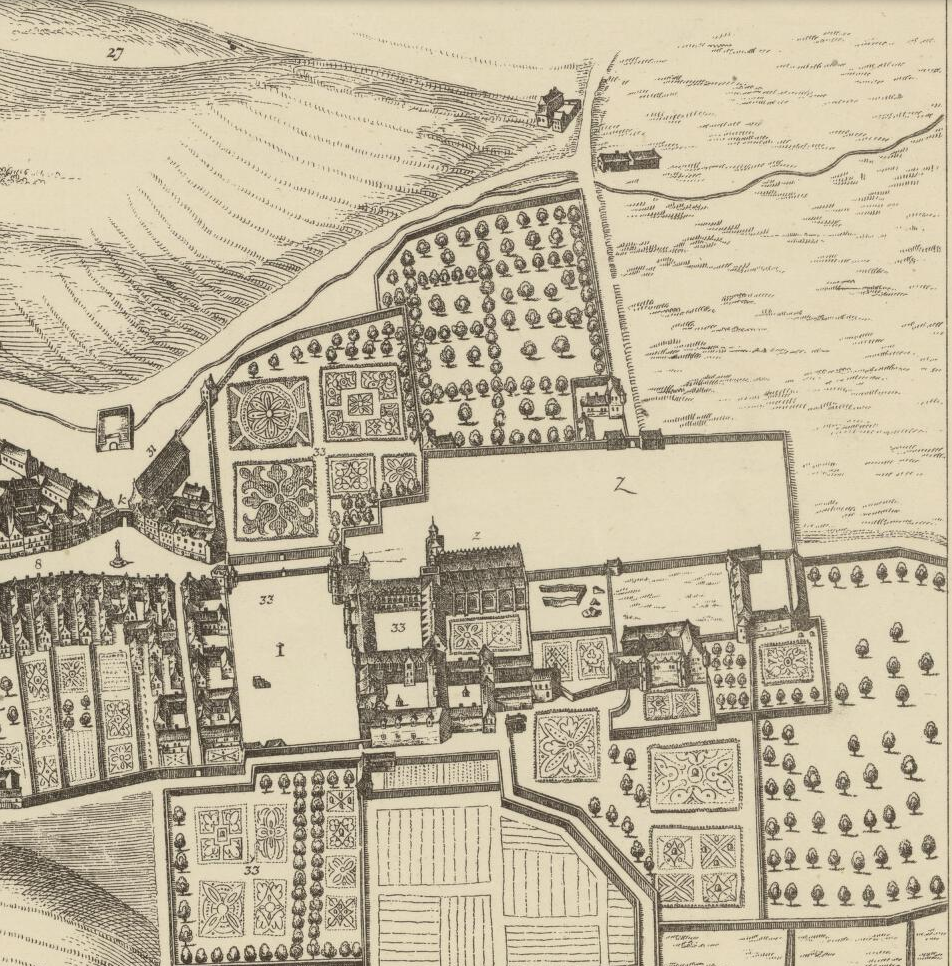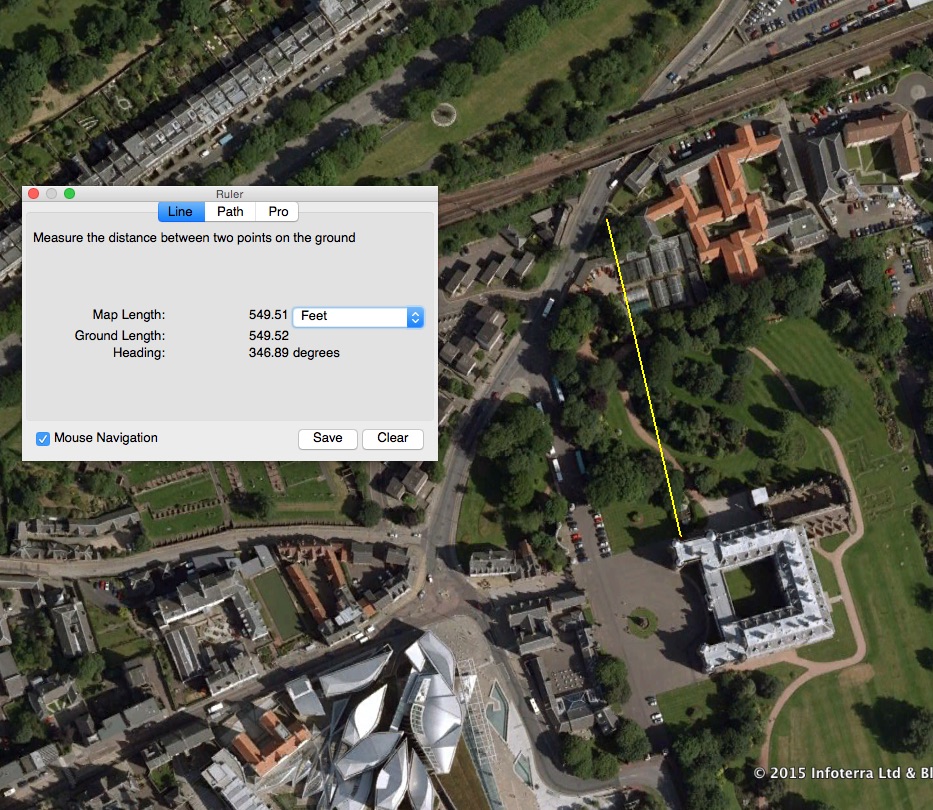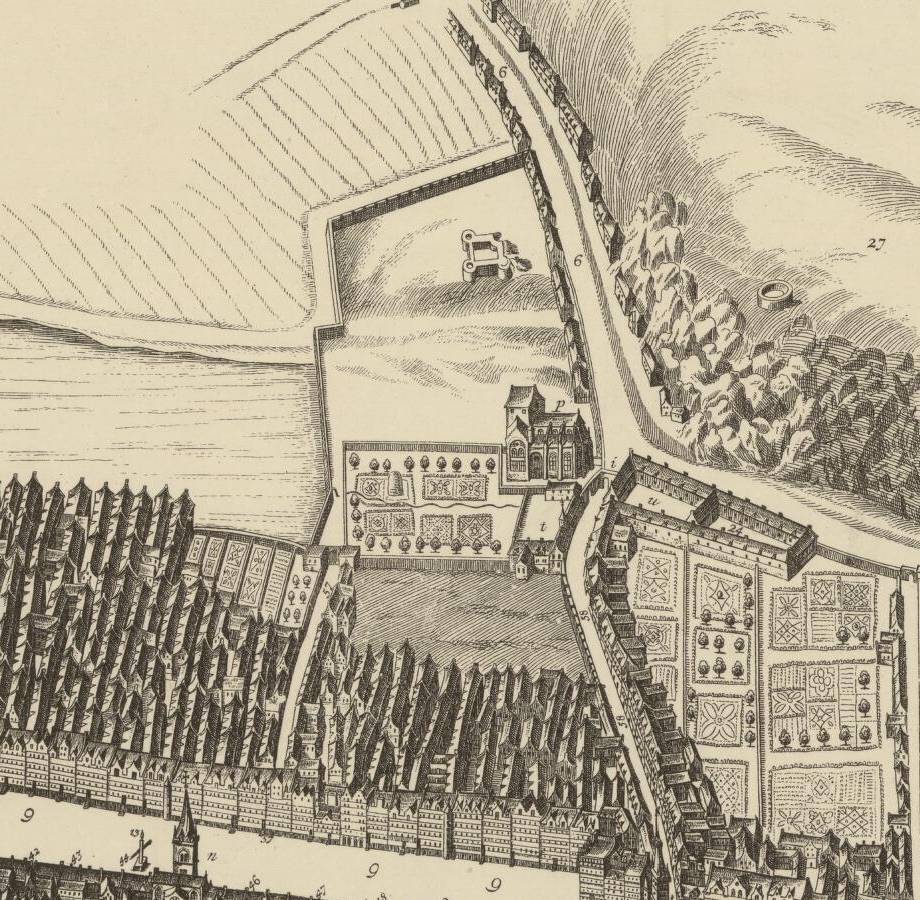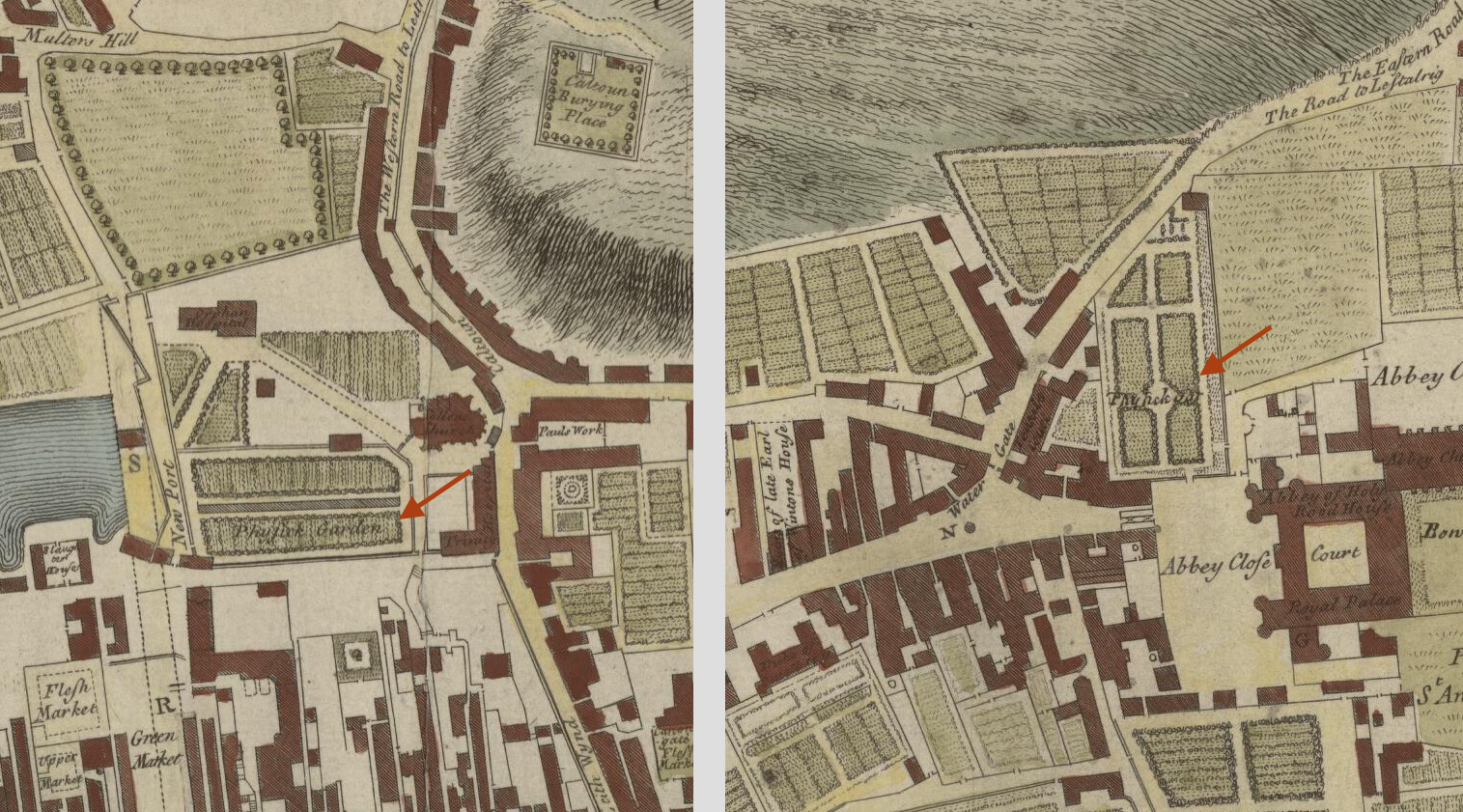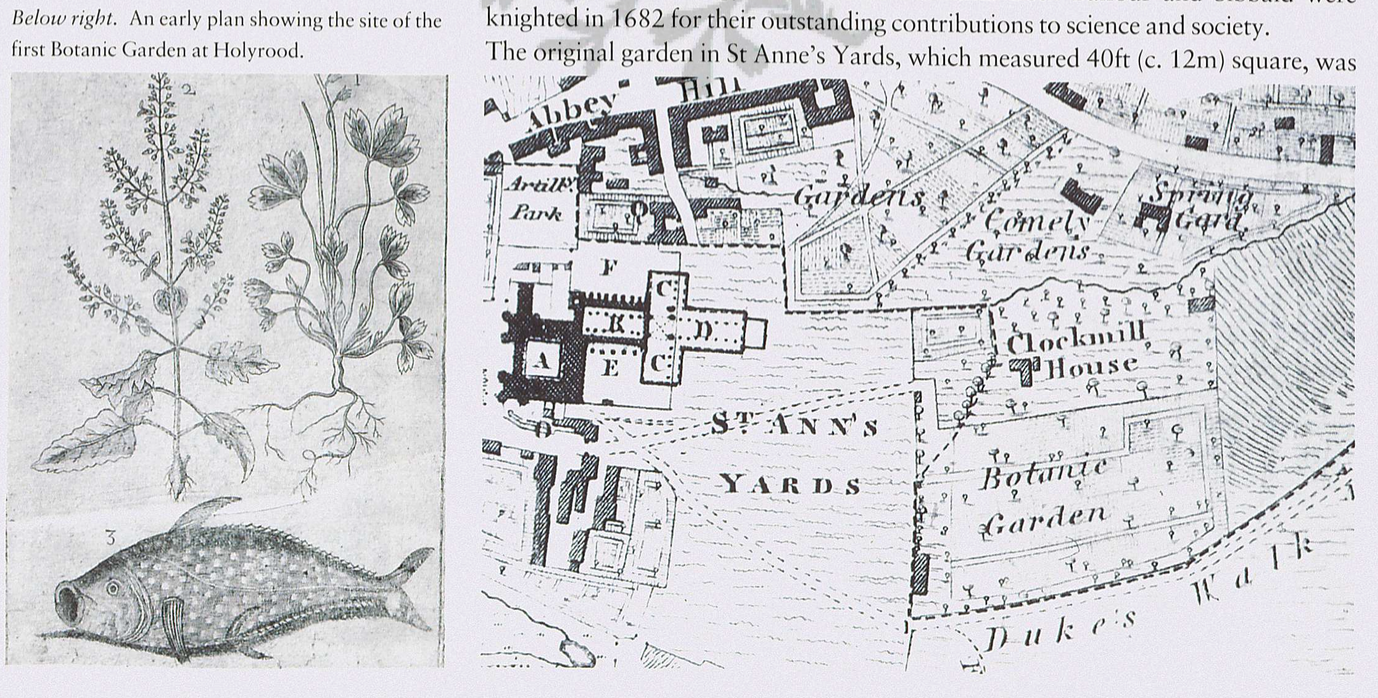It has become second nature to look to Wikipedia for a summary of a subject. So when I was looking for a brief paragraph on the history of my own institution I just turned to the Wikipedia page for the Royal Botanic Garden Edinburgh. But there I was stopped in my tracks by a single figure. It said:
400 foot of measure every way
For the unfamiliar the creation myth of the botanics goes as follows. In 1670 two Edinburgh physicians, Robert Sibbald and Andrew Balfour, set up a small physic garden, the size of a tennis court, in the grounds of Hollyrood Palace to grow plants for educational and medicinal purposes. The patch was too small and in 1676 they moved to the grounds of Trinity Hospital by the Nor Loch. This is now platform 11 of Waverley Station. In 1763 it moved again to a site next to Leith Walk and in the 1820s to its current location at Inverleith. A big part of the romance of the story was that the first garden was just:
40 foot of measure every way
That is what it says in the history books of our institution. Surely there was a typo on the Wikipedia page. I should log in and change it. But this is where I caught myself again.
Anyone can edit just about any page on Wikipedia but there is a protocol that you should not write about yourself or your own institution unless it is correcting a specific factual error and even then you should justify yourself on the associated ‘Talk’ page. This is to prevent self promotion. As I was about to edit my own institutions page I thought I should at least check my facts.
Reasoning that the “4oo foot” had been cut and paste from somewhere else on the internet I Googled the entire phrase and came up with a page about the modern Sibbald Physic Garden on the Royal College of Physicians of Edinburgh website. If it had been any other institution I would have written it off as typo but one Sir Robert Sibbald was a founding member of RCPE and was the one to petition Charles II for a royal charter in 1681. The RCPE not only have a Sibbald Physic Garden they have the Sibbald library and are experts on all things Sibbald saving perhaps the plant genus Sibbaldia. Their history books, including History of the Royal College of Physicians of Edinburgh (W.S. Craig 1976), give it as 400 foot. Perhaps the tennis court size patch really was a myth.
The National Library of Scotland have some wonderful maps available on-line including a James Gordon of Rothiemay map of Edinburgh in 1647 – just 23 years prior to the founding of the garden.
This map shows gardens to the North of Holyrood and if we look at the same view on Google Earth today we can estimate their size – which would be around four to five hundred feet. So maybe there is hope for a 400 foot garden being the origin. It certainly seems reasonable for someone to have looked at this map and presumed Sibbald must have meant 400 foot.
In our library we have a “The Memoirs of Sir Robert Sibbald (1641-1722)” by Francis Paget Hett (1932) which contains a transcription of the hand written manuscript of the Sibbald Memoir held in the National Library of Scotland where he describes the founding of the garden. The full quote about the founding of the garden is:
Dr Balfour and I first resolved upon it, and obtained of John Brown, gardner of the North Yardes in the Abby, ane inclosure of some 40 foot of measure every way. We had, by this tyme, become acquaint with Master James Sutherland, a youth, who, by his owne industry, had attained great knowledge of the plants and of medals, and he undertook the charge of the culture of it. By what we procured from Leviston and other gardens, and brought in from the Country, we made a collection of eight or nyne hundred plants yr.
Eight or nine hundred plants seems quite a lot to get into a forty foot square piece of land but if you consider the present day Biodiversity Garden next to the John Hope Gateway contains around five hundred and is planted for effect rather than productivity then it is feasible.
Of course the whole thing could be explained if we had been working from the 1932 transcription and the RCPE working from another transcription or the original. The only solution was to visit the rare books room of the National Library of Scotland and take a look at the original in Sibbald’s own hand – which is what I did on my way home the other night. And it says there, as clear as can be, “40 foot”. I would like to show you a picture of this but the NLS terms and conditions do not permit me to make images. I have a photocopy but I am not allowed to put that on line either so you will just have to believe me. But the matter is settled … or is it?
Whilst I was at the RCPE Sibbald library I asked to take an image of an authenticated sample of Sibbald’s writing. It is similar to the hand that wrote the memoir but not the same and the hand is just that bit too neat for a doctor’s let alone a 17th Century doctor’s so my hunch is the manuscript in the NLS is a copy as its provenance does depend on handwriting. An error could have been made at that stage.
If we consider the whole of what is written in the memoir it says that an “inclosure of some 40 foot of measure every way” was obtained from the “gardner of the North Yardes”. It doesn’t actually say it was to the North of Holyrood though it is implied it was part of the area John Brown gardened and so it was an enclosure in an existing garden which would have already been growing a range of plants for the household including herbs. James Sutherland would have had support services around him or perhaps John Brown was a hindrance. On the same map it shows Trinity Hospital which already has its own gardens 26 years before Sibbald and Balfour took it over as a physic garden.
On the Plan of the city and castle of Edinburgh by Willm. Edgar architect 1765 (95 years after the founding) two physic gardens are shown. One at Holyrood and one at Trinity Hospital. So for almost a century we occupied two sites both of which were gardens before we arrived. The move to our Leith Walk site was the big leap as it doesn’t appear there was a garden already there – it was a green field development.
Sibbald also mentions being in competition with the surgeons of Edinburgh and we know they had their own physic garden at Currie Hill. There was also a physic garden associated with the castle at this time. During the course of my researches several people hinted that 17th century Edinburgh physic gardens were a minefield and best avoided. I think I will take their advice. Beyond adding a note to Wikipedia the only thing I will take forward from this is that, of all the memorials to founders we have in our garden there is nothing to celebrate James Sutherland our first horticulturist whose “owne industry” and “great knowledge” made the whole thing possible.
[The historic maps here are small samples from those hosted by the National Libraries of Scotland. If you click on them you will be taken to a high resolution zoomable version.]
Postscript
No sooner had I published this than I came across a different map in our popular guide to the gardens “Four Gardens In One” by Deni Bown (1992). It has a plan of Holyrood with “Botanic Garden” marked on it but no source referenced so I am not sure where it came from. By the buildings and the fact that it refers to “Botanic Garden” rather than “Physik Garden” I presume it is much later. But it would appear the gardens marked are a good 400 foot long. For scale the court in the centre of Holyrood palace is about 40 foot in each direction.
I’ve also been shown secondary sources that mention the gardens being in St Ann’s Yard but not original sources – so I’ll not repeat the rumours here!
Post-Postscript
The map in “Four Gardens In One” is actually “This plan of the City of Edinburgh and its environs.” by Kirkwood in 1817.

